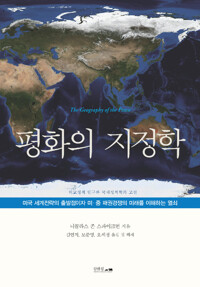
America’s strategy in world politics: the United States and the balance of power
- 발행사항
- New Brunswick, NJ : Transaction Publishers, 2007
- 형태사항
- xxxii, 500 p.: ill., map ; 23cm
- ISBN
- 9781412806312
- 청구기호
- 349.42 S772a
- 서지주기
- Includes bibliographical references (p. 473-480) and index
소장정보
| 위치 | 등록번호 | 청구기호 / 출력 | 상태 | 반납예정일 |
|---|---|---|---|---|
이용 가능 (1) | ||||
| 1자료실 | 00012243 | 대출가능 | - | |
- 등록번호
- 00012243
- 상태/반납예정일
- 대출가능
- -
- 위치/청구기호(출력)
- 1자료실
책 소개
Less than a year after the United States entered the Second World War, Nicholas Spykman wrote a book that placed the war effort in the broader context of the 1940s global balance of power. In America's Strategy in World Politics, Spykman examined world politics from a realist geopolitical perspective. The United States, he explained, was fighting for its very survival as an independent country because the conquests of Germany and Japan raised the specter of our geopolitical encirclement by hostile forces controlling the power centers of Europe, the Middle East, and East Asia. Spykman warned that the United States could not safely retreat to a defensive position in the Western Hemisphere.
Spykman looked beyond the immediate strategic requirements of the Second World War, envisioning a postwar world in which the United States would help shape the global balance of power to meet its security needs. Even though Soviet Russia was our wartime ally, Spykman recognized that a geopolitically unbalanced Soviet Union could threaten to upset the postwar balance of power and thereby endanger U.S. security. Spykman also foresaw the rise of China in postwar Asia, and the likely need for the United States to ally itself with Japan to balance China's power. He also recognized that the Middle East would play a pivotal role in the postwar world.
Spykman influenced American postwar statesmen and strategists. During the Cold War, the U.S. sought to deny the Soviet Union political control of Western Europe, the Middle East, and East Asia. Spykman's geopolitical vision of U.S. security, supported by a balanced Eurasian land mass, coupled with his focus on power as the governing force in international relations, makes America's Strategy in World Politics relevant to the twenty-first century.
Less than a year after the United States entered the Second World War, Nicholas Spykman wrote a book that placed the war effort in the broader context of the 1940s global balance of power
목차
INTRODUCTION, PART ONE THE UNITED STATES AND THE BALANCE OF POWER I. Power Politics and War II. The United States in the Western Hemisphere III. From Monroe Doctrine to Hemisphere Defense IV. America and the Transatlantic Zone V. America and the Transpacific Zone VI. The United States in the World PART TWO THE STRUGGLE FOR SOUTH AMERICA VII. The Two Americas VIII. Propaganda and Counter-Propaganda IX. The Economic Pattern of the New World XI. Economic Integration XII. The Political Pattern of the New World XIII. The New World versus the Old XIV. The Military Front CONCLUSION


